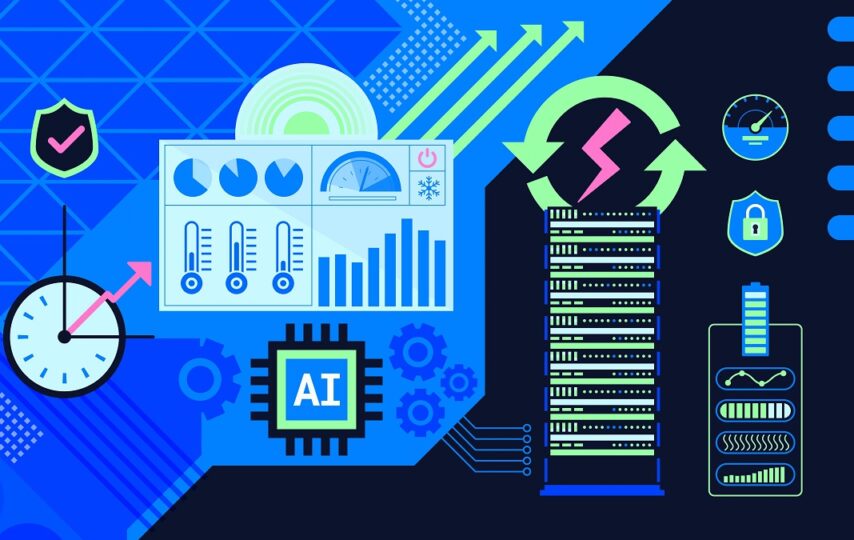The field of Artificial Intelligence (AI) is seeing tremendous advancements, leading to a growing influence on data centers. Generative AI, an area of AI development, encompasses the use of algorithms to generate new content across several domains, including but not limited to pictures, music, and textual material.
The need for Generative AI is seeing significant development due to its potential to bring about revolutionary changes across a range of sectors, including but not limited to gaming and healthcare. The impressive capacity of generative AI solutions has garnered significant interest from academics, developers, and enterprises, resulting in a growing need for such technologies.
Optimize the use of Generative AI inside your organization via the utilization of Generative AI development services. Our organization surpasses the skills of many prominent businesses, including OpenAI ChatGPT, Midjourney, and so on they want to uncover the vast potential of Generative AI technology. They facilitate the use of Generative AI Technologies to enhance company operations and achieve a competitive advantage within the industry.
Why AI technology is rising?
In recent times, there has been a notable rise in the prevalence of AI technology, which has had a substantial influence on the employment process. The rationale for this transition is comprehensible since organizations already use advanced generative Artificial Intelligence (AI) systems to promptly select the most suitable applicants for their job vacancies.
However, the process of acquiring the services of highly skilled Generative AI Developers may be a complex and demanding task due to the sophisticated nature of the subject and the limited availability of top-quality professionals. This thorough book aims to explore essential techniques and optimal practices that may aid in effectively finding and recruiting highly skilled Generative AI Engineers for your firm.
The Wonders of Generative Artificial Intelligence Explosion
There is a consensus that in 2023, there will be a widespread industrial effort to acquire lease space due to the influence of GenAI. There is a significant degree of conjecture about the scalability of AI applications, leading to substantial growth in the data center business. This growth is characterized by an increase in infrastructure quantity, higher infrastructure density, and larger deployments.
The approximate magnitude of resource requirements imposed by AI applications on data centers is understood, and it is recognized that this technology can significantly influence the whole economy. Nevertheless, although the establishment of a cloud environment has become a well-defined process in the last ten years, the design of AI data center architectures remains largely unexplored and unexplored. This has led prominent GPU providers to raise concerns about the industry’s preparedness for the impending surge in AI technology.
Data center infrastructures tailored to accommodate generative AI installations exhibit distinct characteristics and behaviors compared to those intended for cloud workloads. However, the precise attributes of these workloads remain somewhat uncertain. To check on the growing computing demands of generative Artificial Intelligence, data centers are being outfitted with sophisticated hardware and architecture. Generative AI applications need the use of high-performance GPUs and specialized CPUs to effectively manage intricate algorithms and extensive datasets.
Data centers are increasingly incorporating scalable and adaptable designs to meet the expanding need for computational capabilities and storage capacity. Generative AI is like having a super-talented coworker who does research and writing for you as well as helping you with your emails and even coding. In practice, a tough supporter who gets straight to the point and provides the most pertinent facts that you need.
The Challenges for Data Centers: Meeting the Computational needs of Generative AI
This year had a significant rise in leasing activity, mostly attributed to the increasing demand for data center facilities with increased density. This surge in demand may be largely attributed to the need to support the development of Artificial Intelligence (AI) technologies. The aforementioned increase highlights the increasing significance of data centers in fulfilling the computing needs of generative Artificial Intelligence. The next generation of LLMs, such as GPT-4, is now undergoing training on enormous data sets with the end objective of developing neural networks with an estimated number of parameters of more than one trillion. The increasing need for generative Artificial Intelligence (AI) poses considerable hurdles for data centers in fulfilling the processing needs of this advanced technology.
Generative Artificial Intelligence (AI) procedures, like deep learning and neural systems, require huge computing resources and storage competencies so that they can take out all data that is realistic and of the best quality. The prominent providers of cloud services are experiencing tremendous growth to meet the demands of Artificial Intelligence. The process of growth has presented a growing challenge in locating appropriate space and power resources for smaller demands across diverse markets. One of the primary obstacles lies in the heterogeneous nature of AI since it comprises two separate stages, namely training and inference.
Reformatting the Data Center in Preparation for AI
Because it places sustainability at the core of the plan, this idea of making the most of what is currently available might end up dictating how we rearrange the data centers in our organization. If we do not immediately begin to make smarter choices that will extend the lifespan of data center goods, such as moving to liquid and immersion cooling approaches, then our attempts to adapt to AI-dense infrastructure will be rendered fruitless. Any sector, including data centers, should have the high goal of staying one step ahead of the transformation brought on by AI. The high-density computer equipment takes a substantial amount of electricity, which results in rising expenses for energy and greater worries about the environment. The process of cooling these servers to keep them from overheating may also be a significant difficulty since ineffective cooling techniques can affect both functionality and dependability.
The effect that Generative Artificial Intelligence will have on Data Centers
AI and ML algorithms offer inbuilt efficacy in the identification of patterns within datasets. Subsequently, individuals proceed to use the knowledge they have acquired to streamline and mechanize a significant portion of their routine tasks and processes. Lately, operators of data centers have included Artificial Intelligence to assist in simplifying the day-to-day administration of services. Workloads that are very difficult on the infrastructure of data centers are handled by contemporary organizations. Achieve the emergence of your concepts via the use of personalized Generative AI models.
Bottom Line
As we look to the future, the possibilities of generative AI are both awe-inspiring and thought-provoking. Understanding how generative AI works can unlock a world of limitless possibilities for several businesses.



